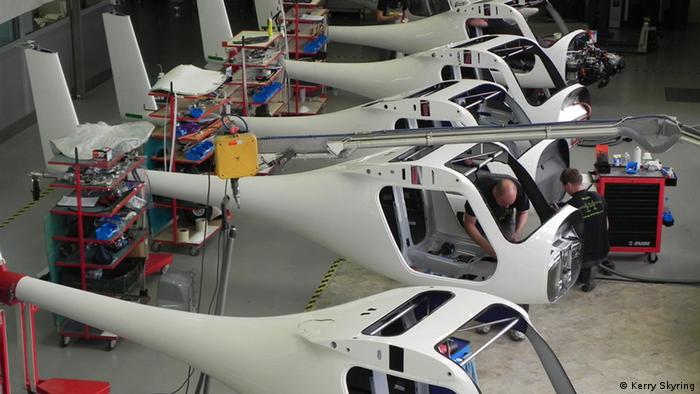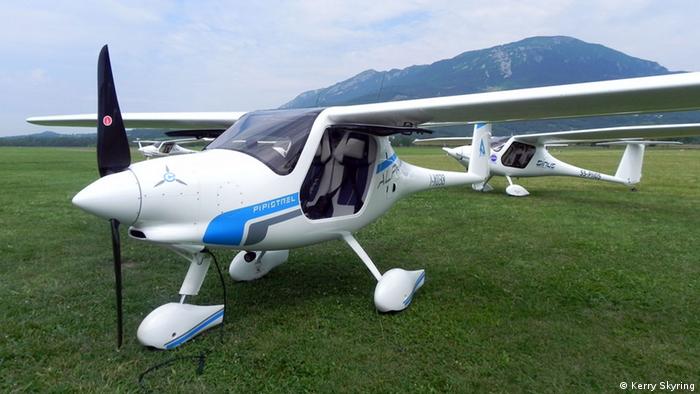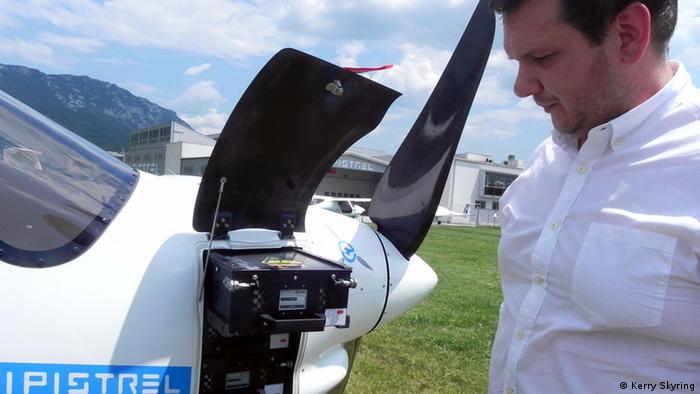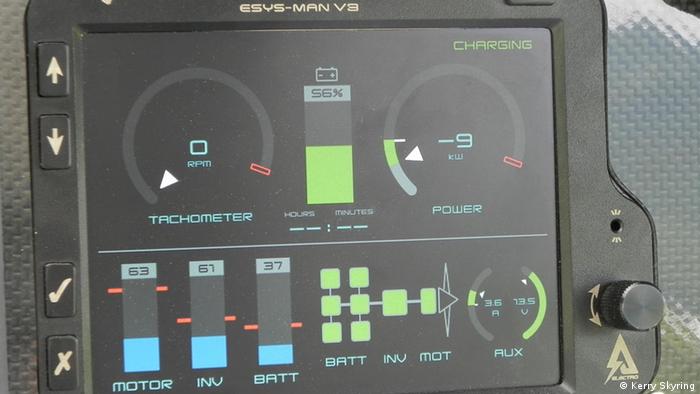Electric flight finds its wings at Slovenian startup with lightweight Alpha Electro
BATTERY POWERED
Electric flight finds its wings at Slovenian startup with lightweight Alpha Electro
The world's first electrically powered training airplane is not built by an aerospace giant. The Alpha Electro is developed by Pipistrel, a small plane-maker with big ambitions for environmentally friendly flight.
When the Pipistrel's propeller begins turning there is a very low whining sound. Push the power lever forward and the electric-motor's hum is joined by a swishing sound, reminiscent of a ceiling fan on a summer's day. And that's it: no grinding of starter motors, belching of smoke, or gathering roar of cylinders, valves, sparks and combustion.
Instead there's an uncanny aspect to this absence of theatrics. Within a few seconds of the power hitting 100 percent, the slim-winged trainer is quietly airborne.
"It's like flying behind a washing machine," says Pipistrel's chief engineer, Tine Tomažič, as he compares the sound of the Alpha Electro to its petroleum powered twin.
Customers can choose between an 80 horse-power conventional version and the 85 kilowatt electric powered version.
Looking across a dozen or more of the small white machines on the assembly line at a factory at Ajdovščina in southern Slovenia, Tomažič says the secret to their success is efficiency.
"They consume a very small amount of electricity, and their popularity is growing for all of these reasons, I suppose," says Tomažič.
Life as a lightweight
Pipistrel (the word means bat in Slovene) has built around 1,000 aircraft since it was founded in the late 1980s.
That's a small number compared to the big, light aircraft manufacturers, most of which are US based. However, the company is making inroads into the lighter end of the light aviation market by designing ultra-efficient aircraft.
"When I started, I was the most crazy designer in the eyes of my competitors because I pushed the design in the way that the aircraft must be - energetically efficient, [and] must burn as little fuel as possible," says company founder and general manager, Ivo Boscarol.
The big challenge in electric flight is lifting the batteries - they are much heavier than the equivalent energy available from a tank of avgas or diesel.
So if the aircraft is to carry any useful payload, plus its batteries, it needs to start life as a lightweight. The batteries also mean a shorter range.
"The Alpha Electro does one thing very well, and this is staying up in the air for one hour, practicing take-off and landings. It can indeed fly away and come back but it has limited range of 150 kilometers," says Tomažič.
For a light plane, invest heavily in innovation
In the research and development department, chief research engineer Andrej Horvat says the way to make an aircraft light enough for electric flight is to invest heavily in innovation.
"Research and development is what creates new products and in that sense drives the company forward," he says, pointing out that about 10 percent of all Pipistrel employees work in R and D.
That effort appears to be paying off for the small Slovenian company. It has won the prestigiousNASA General Aviation Technology Challenge two years running.
It's also given it a lift in a tough market, with dozens of other two seat trainers in the same weight class.
"We are running our fourth generation, in-house developed battery management system, tracking every cell, and we are also tracking its historical behavior in order to forecast a failure," says Tomažič, conscious of the aviation industry's conservatism on safety.
The Alpha Electro uses Lithium-ion batteries, which can be recharged in 45 minutes - "about the usual amount of time between training flights" – says the chief engineer. Or they can be exchanged in a matter of five minutes.
Where's the fuel gauge?
As he prepares to fly the Alpha Electro from a grass airfield adjoining the factory, Tine Tomažič, who's swapped his engineering overalls for a pilot's cap, praises his little plane's simplicity.
"You are basically checking the airframe. All the checks on the propulsion system are automated and basically all the information I need as a pilot I can find on display in the cockpit."
This contrasts with the normal pre-flight of a light aircraft which would include checking engine oil, physically measuring fuel contents and taking fuel samples along with numerous other safety checks.
"There isn't anything to check on the motor actually so by checking that the propeller movement is unobstructed that's basically it," he says.
Recharge on descent
At 2,000 feet above the green valleys and hills of southern Slovenia the Electro's power gauge shows 42 percent, while it is still climbing at 500 feet-per-minute - a performance which many petrol powered competitors would find difficult to match.
It's then that Tomažič demonstrates the Pipistrel's party trick. He reduces power and begins to descend towards the airfield.
"And what you notice on the power gauge is that the power goes negative, meaning that you are now charging the batteries - for every descent you are charging the batteries," he says with a grin.
The propeller has become a wind driven generator and in an aircraft which will spend much of its life teaching trainee pilots to take-off and land, that's a clever piece of kit. dw de




Comments